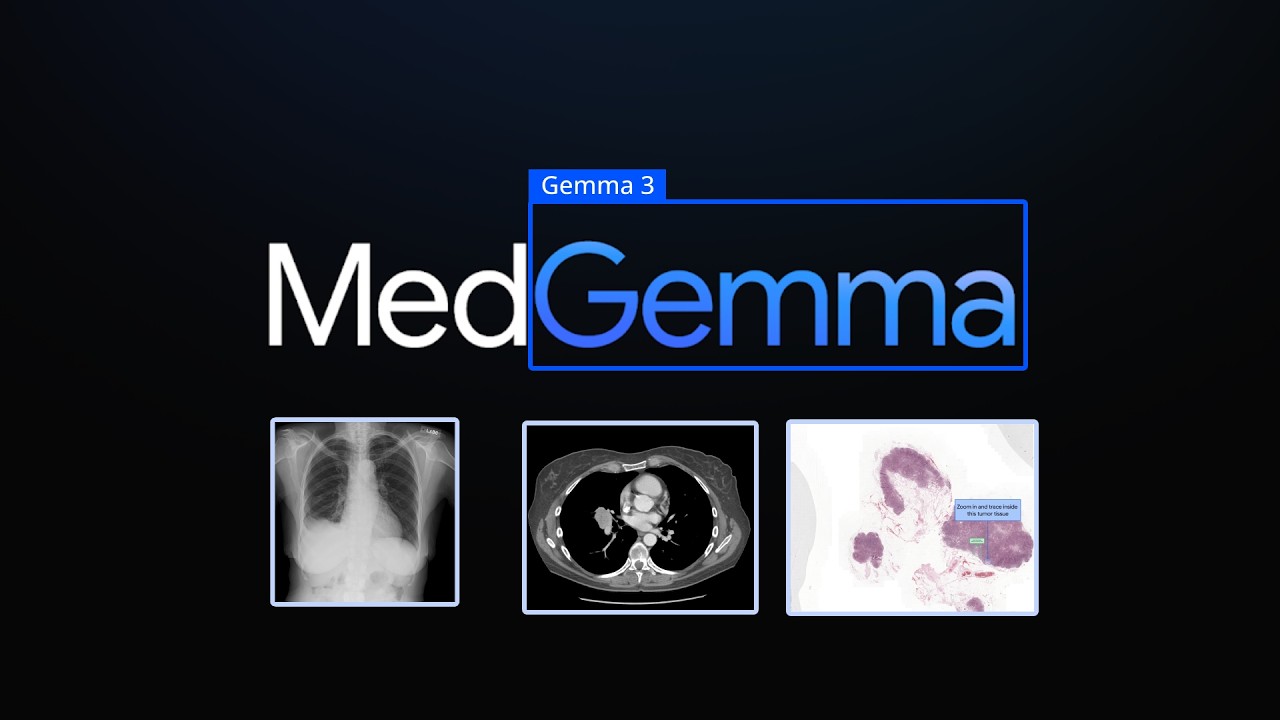The video introduces Google’s open-source MedGemma models, particularly the multimodal Gemma 3N series, designed for medical image and text analysis, and highlights their accessibility for public testing and customization. It emphasizes how these models enable more practical, specialized, and resource-efficient medical AI applications, fostering innovation and democratizing advanced healthcare tools.
The video discusses recent developments announced at Google I/O, focusing on the new MedGemma models, particularly the Gemma 3N series. These models are designed for mobile use, aiming to be open-source, customizable, and multimodal, capable of handling both images and audio. The speaker highlights the significance of these models as they are open for public testing and fine-tuning, contrasting them with earlier proprietary models. The MedGemma models are specialized versions of Google’s Gemma 3 architecture, tailored specifically for medical text and image analysis, with the 27B version being multimodal and the 4B version focusing on images.
The speaker emphasizes the importance of these models in the context of the broader trend toward specialized AI in medicine. Historically, models like Med Palm and MedPal 2 demonstrated that AI could outperform general models in specific diagnostic tasks, but access to these models was limited. The speaker notes that Google’s MedGemma models are now openly available, allowing researchers and developers to experiment with medical AI without the previous restrictions. This openness marks a significant step forward in democratizing access to advanced medical AI tools, which were previously confined to research labs or proprietary systems.
The video reviews the capabilities of the MedGemma models through practical examples. The 4B multimodal model can analyze medical images like chest X-rays and generate detailed descriptions, although the speaker advises caution in relying solely on AI for diagnosis. Both the 4B and 27B models excel at text-based tasks, such as answering medical questions or engaging in interactive conversations about symptoms and health advice. The speaker demonstrates how changing system instructions can make the models more conversational and helpful, enabling them to ask follow-up questions and simulate a more human-like medical consultation, which could be valuable in resource-limited settings.
Furthermore, the speaker discusses the potential for fine-tuning these models for specific medical applications. Using provided code and tools like Hugging Face’s PEFT library, users can adapt the pre-trained models to particular tasks or datasets, such as classifying tissue types or diagnosing specific conditions. This flexibility allows smaller, more efficient models to achieve state-of-the-art performance, challenging the dominance of large proprietary models. The ability to run these models on modest hardware makes them accessible for research, product development, and deployment in environments with limited resources.
In conclusion, the video highlights the significance of Google’s open MedGemma models as a breakthrough in medical AI. They demonstrate that smaller, fine-tuned models can outperform older, larger models, making advanced AI more accessible and practical for real-world applications. The availability of these models for testing and customization opens new avenues for research, healthcare innovation, and privacy-conscious deployment. The speaker encourages viewers to explore these tools for their own projects, emphasizing that this shift toward open, specialized AI models is transforming the landscape of medical and other domain-specific AI applications.
